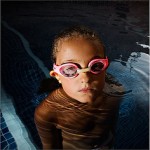 The 2009 NSW Child Death Review Team Annual Report has been released today
The 2009 NSW Child Death Review Team Annual Report has been released today
In the report The Child Death Review Team notes:
Private swimming pools or spas
In 2009, seven children drowned in private swimming pools.
Five of the deaths concerned young children accessing the pool without the knowledge of their carer – the absence of appropriate supervision was a factor in these deaths. There were also issues with the pool barriers, the way they were used, or both.
The Child Death Review Team has previously recommended, in its report Trends in Child Deaths in NSW 1996–2005 (CDRT, 2009):
That the NSW Swimming Pools Regulation 2009 require local authorities to inspect all swimming pools notified within their area and monitor compliance with the legislation. This could occur through councils developing a plan for inspection and monitoring over a period of years and reporting periodically against the plan.
The Child Death Review Team notes that:
“Following a comprehensive review, the Swimming Pools Act 1992 was amended in December 2009. Based on research, a cost-benefit analysis and extensive community consultation undertaken as part of that process, a mandatory swimming pool inspection program by local authorities was not introduced at that time. (emphasis added by admin here)
However, the Act amendments made do encourage compliance with the legislation through alternative mechanisms.They also strengthen pool barrier requirements. Key amendments include: Local authorities are required to investigate complaints received about non- compliance with the Act; Local authorities have the power to enter a property to rectify pool barriers in situations where non-action poses a significant risk to public safety; Penalty amounts for most offences have been increased from $1,100 to $5,500, including for failure to provide and maintain a swimming pool barrier to stand- ard and failure to keep gates securely closed when not in use; Removal of automatic exemptions from barrier requirements for new pools on very small properties, large properties and waterfront properties.
Additional backyard swimming pool safety education initiatives were implemented in tandem with the legislative changes made. These include publication and promo- tion of a Swimming Pool Laws brochure and Home Swimming Pool Safety Checklist for pool owners as well as distribution of a Home Pool Safety in a Box kit to all NSW councils and childcare centres.
This approach aims to strike an appropriate balance between regulatory and non-regulatory initiatives. It rec- ognises that, while strengthening legislation may assist to reduce child drownings, the most effective way to keep young children safe around backyard swimming pools is to ensure that they are responsibly supervised at all times. The Minister for Local Government is also considering the findings and recommendations from the NSW Deputy Coroner report on a coronial inquest into eight deaths of very young children in backyard swim- ming pools between 2006 and 2009, including the need for further amendments to the Swimming Pools Act 1992.
Whilst the team welcomes these initiatives, it remains concerned that these measures do not go far enough to protect young children from drowning in swimming pools (emphasis added by admin here). In 2009, seven children died as a result of drown- ing in swimming pools.
The Team strongly recommends that the NSW Government provides local councils with adequate resources to ensure monitoring and compliance against the requirements of the legislation.
The Samuel Morris Foundation agrees with the concerns of the NSW Child Death Review Team and will continue to lobby for further improvements to the NSW Swimming Pools Act and associated regulations to improve the committment of State and Local Government to contribute to reducing the child drowning death and disability rate.
Childhood drowning does not receive the same level of government funding and intervention as other causes of childhood death. The Samuel Morris Foundation knows that the death of any child is a tragedy that affects a large number of people within the community, so in making the comparison below we not in any way seeking to dismiss the anquish and grief associated with the deaths of children by other causes.
To put the number of domestic swimming pool drowning deaths in context and make a direct comparison of raw numbers, please consider this (only the numbers for children aged 0-9 are included in this comparison as ALL the children that died in domestic swimming pools fell within this grouping):
Number of deaths from drowning in domestic swimming pools 7
Number of deaths from pedestrian accidents 3
Number of deaths as passengers in motor vehicles 9
It is necessary to pause for reflection on these raw numbers. The NSW Government has been investing MILLIONS upon MILLIONS of dollars installing flashing lights and speed cameras outside schools and do so with very little community consultation, yet despite numerous recommendations from NSW Coroners, recommendations from the Child Death Review Team and continued lobbying from groups like the Samuel Morris Foundation, the Government has failed to implement changes which have been proven in other jurisdictions to make a significant impact on the number of drowning deaths.
Is the simple fact that the Government is chasing revenue from speed cameras and pool safety is not attractive to a government because they do not see changes in this area as a potential revenue earner?
A further comparison of the death rates will be produced after further analysis of the report.




Leave a Reply